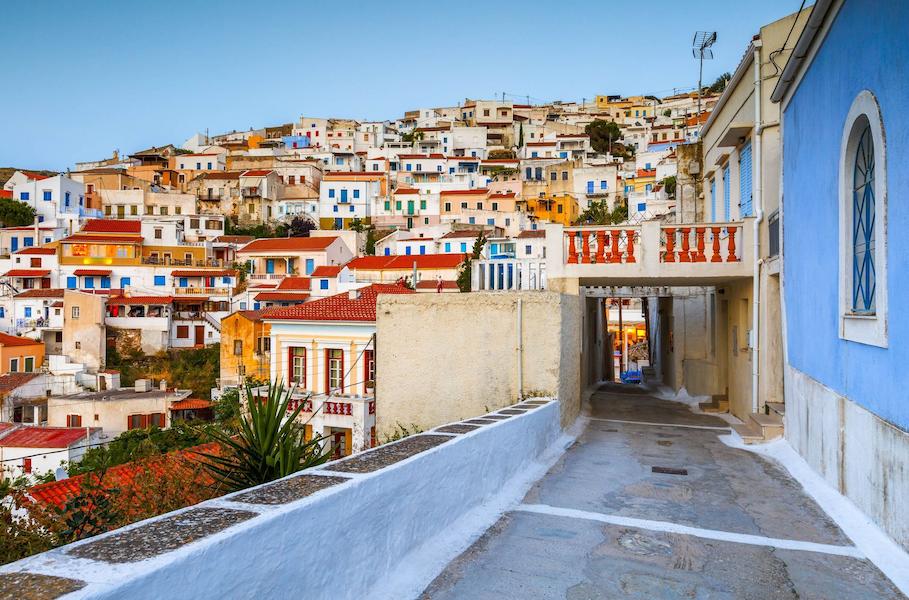Almond-shaped Kea, which is also called Tzia, is one of the larger islands along the northwestern rim of the Cyclades group and rises before the turbulent sea current of Cavo Doro. Slate cliffs, a mountainous terrain, and gurgling springs are characteristic of a landscape that also features an uneven coast with quaint coves and capes jutting aggressively into the sea.
The island’s fertile interior is planted with almond trees, citrus orchards, and majestic oaks. Endemic herbs and plants, including the highly poisonous hemlock, cover the ground. In the past, the island also produced barley and a dark red grape variety known as mavroudi still cultivated today and is covered with almond trees and offers free grazing to cows, sheep, goats, and pigs.
Kea produces several tasty kinds of cheese: ksino (sour cheese), chloro, mizithra, and kopanisti mature slowly. Local honey is kneaded with sesame seeds to make delicious pasteli bars.
In November, fattened pigs are slain according to a traditional ritual (hirosfaghia) and provide food for the entire year, preserved as sausage and louza. A popular local dish often found simmering on the stove is the “maildi”, eggplant pierced with garlic and stewed in tomato-olive oil sauce with potatoes and herbs. Flathead mullet is filleted, then bones and flesh are simmered with bay, peppercorns, lemon, and vinegar to form a trembling translucent aspic.
The sound of the tsabouna, a type of bagpipe popular on Greek islands, accompanies the steps of the erotic ballos as partners dance in full embrace rather than facing each other as in the southern Cyclades.
Sweetness is offered through the sensory pleasures of a sesame pasteli made with local honey and wrapped in lemon leaves.




